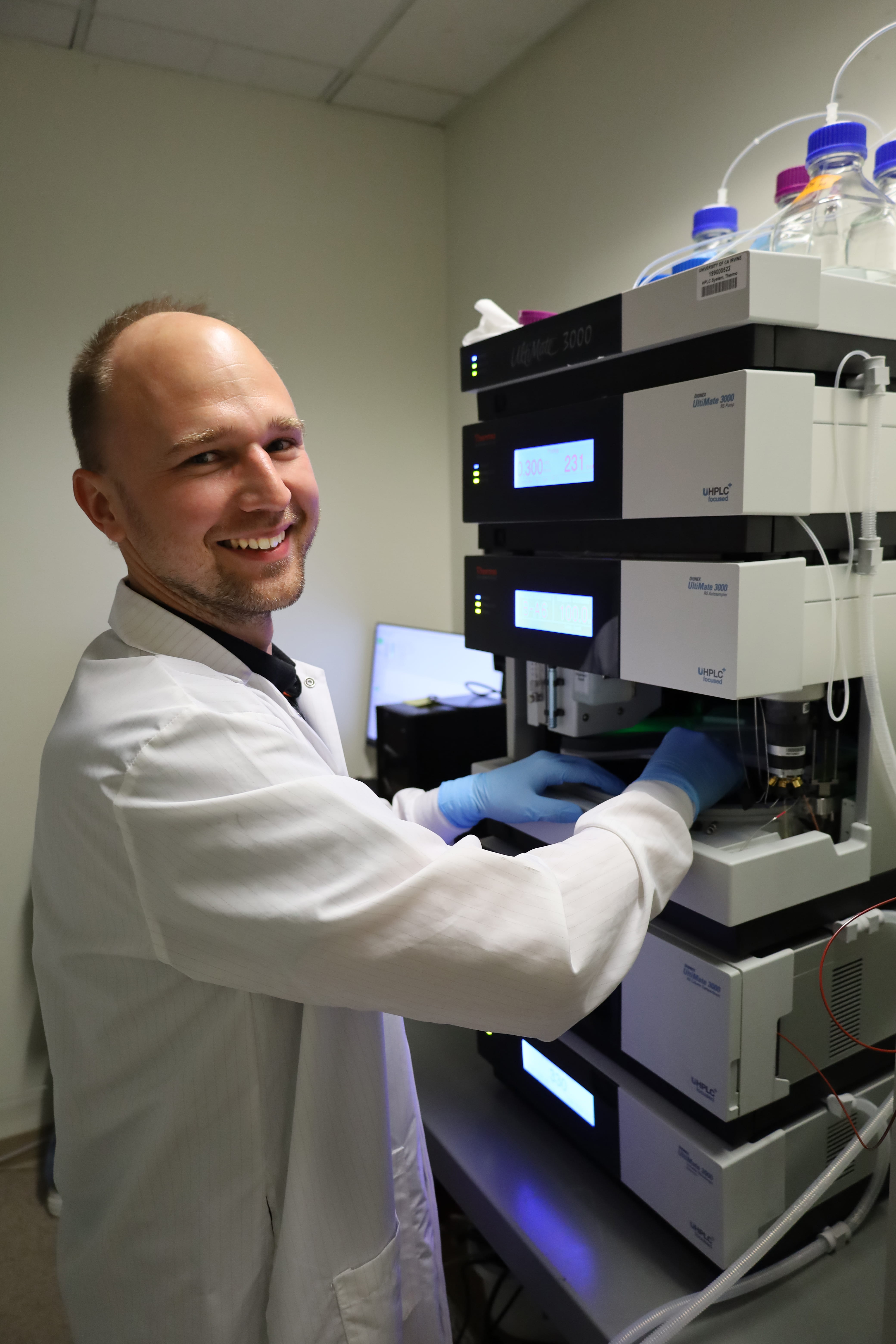UCI researchers reveal molecular mechanisms underlying mutations within the eye that lead to blindness
Understanding the key structural determinants of a highly specialized membrane in the eye could lead to new treatments, even a cure

Irvine, Calif., Jan. 4, 2022 — For the first time, University of California, Irvine researchers in collaboration with the Max-Planck Institute of Biochemistry have revealed at a molecular level, key structural determinants of the highly specialized rod outer segment (ROS) membrane architecture of the eye, which is instrumental to vision.
Published in eLife, the study, titled “Determinants shaping the nanoscale architecture of the mouse rod outer segment,” provides an understanding of the mechanisms underlying the pathologies of certain gene mutations. These mutations, found within genes encoding the key structural proteins in the ROS membrane, have been shown to lead to blindness.
“Our findings indicate that these gene mutations could impede or completely prevent disk morphogenesis which, in turn, would disrupt the structural integrity of ROS, compromise the viability of the retina and ultimately lead to blindness,” said Krzysztof Palczewski, Ph.D., Donald Bren Professor of Ophthalmology at the UCI School of Medicine and corresponding author. “This study gives us insight into how the viability of the retina is compromised by diseases, like retinitis pigmentosa and Stargardt disease, that affect structural proteins including peripherin of ABCA4. Armedwith this data, we can now target new therapeutic approaches aimed at treating or potentially curing blindness.”
The highly ordered ultrastructure of ROS was described more than five years ago, however its organization on the molecular level remained poorly understood, until now. Utilizing cryo-electron tomography (cryo-ET) and a new sample preparation method, the UCI-led team was able to obtain molecular resolution images of ROS.
“Cryo-ET enabled us to image rim disc structures and to quantitatively assess the connectors between disks revealing the molecular landscape in ROS, including connectors between ROS disk membranes,” explained Palczewski. “With this information, we are able to address open questions regarding the close disk stacking and the high membrane curvature at disk rims, which are specialized and essential structural characteristics of ROS.”
Ongoing research, including studies involving humans, is necessary to test these new findings. However, preliminary indications are that new therapeutic approaches will most likely involve gene editing technologies, rather than gene augmentation or pharmacological interventions.
This research was supported by grants from the CIFAR program Molecular Architecture of Life, the National Institutes of Health and the Research to Prevent Blindness organization.
About the UCI School of Medicine: Each year, the UCI School of Medicine educates more than 400 medical students, and nearly 150 doctoral and master’s students. More than 700 residents and fellows are trained at UCI Medical Center and affiliated institutions. The School of Medicine offers an MD; a dual MD/PhD medical scientist training program; and PhDs and master’s degrees in anatomy and neurobiology, biomedical sciences, genetic counseling, epidemiology, environmental health sciences, pathology, pharmacology, physiology and biophysics, and translational sciences. Medical students also may pursue an MD/MBA, an MD/master’s in public health, or an MD/master’s degree through one of three mission-based programs: the Health Education to Advance Leaders in Integrative Medicine (HEAL-IM), the Leadership Education to Advance Diversity-African, Black and Caribbean (LEAD-ABC), and the Program in Medical Education for the Latino Community (PRIME-LC). The UCI School of Medicine is accredited by the Liaison Committee on Medical Accreditation and ranks among the top 50 nationwide for research. For more information, visit som.uci.edu.
About the University of California, Irvine: Founded in 1965, UCI is the youngest member of the prestigious Association of American Universities and is ranked among the nation’s top 10 public universities by U.S. News & World Report. The campus has produced five Nobel laureates and is known for its academic achievement, premier research, innovation and anteater mascot. Led by Chancellor Howard Gillman, UCI has more than 36,000 students and offers 224 degree programs. It’s located in one of the world’s safest and most economically vibrant communities and is Orange County’s largest employer, contributing $7 billion annually to the local economy and $8 billion statewide. For more on UCI, visit www.uci.edu.
About UCI’s Brilliant Future campaign: Publicly launched on October 4, 2019, the Brilliant Future campaign aims to raise awareness and support for UCI. By engaging 75,000 alumni and garnering $2 billion in philanthropic investment, UCI seeks to reach new heights of excellence in student success, health and wellness, research and more. The School of Medicine plays a vital role in the success of the campaign. Learn more by visiting https://brilliantfuture.uci.edu/uci-school-of-medicine/.
Media access: Radio programs/stations may, for a fee, use an on-campus ISDN line to interview UCI faculty and experts, subject to availability and university approval. For more UCI news, visit wp.communications.uci.edu. Additional resources for journalists may be found at communications.uci.edu/for-journalists.
